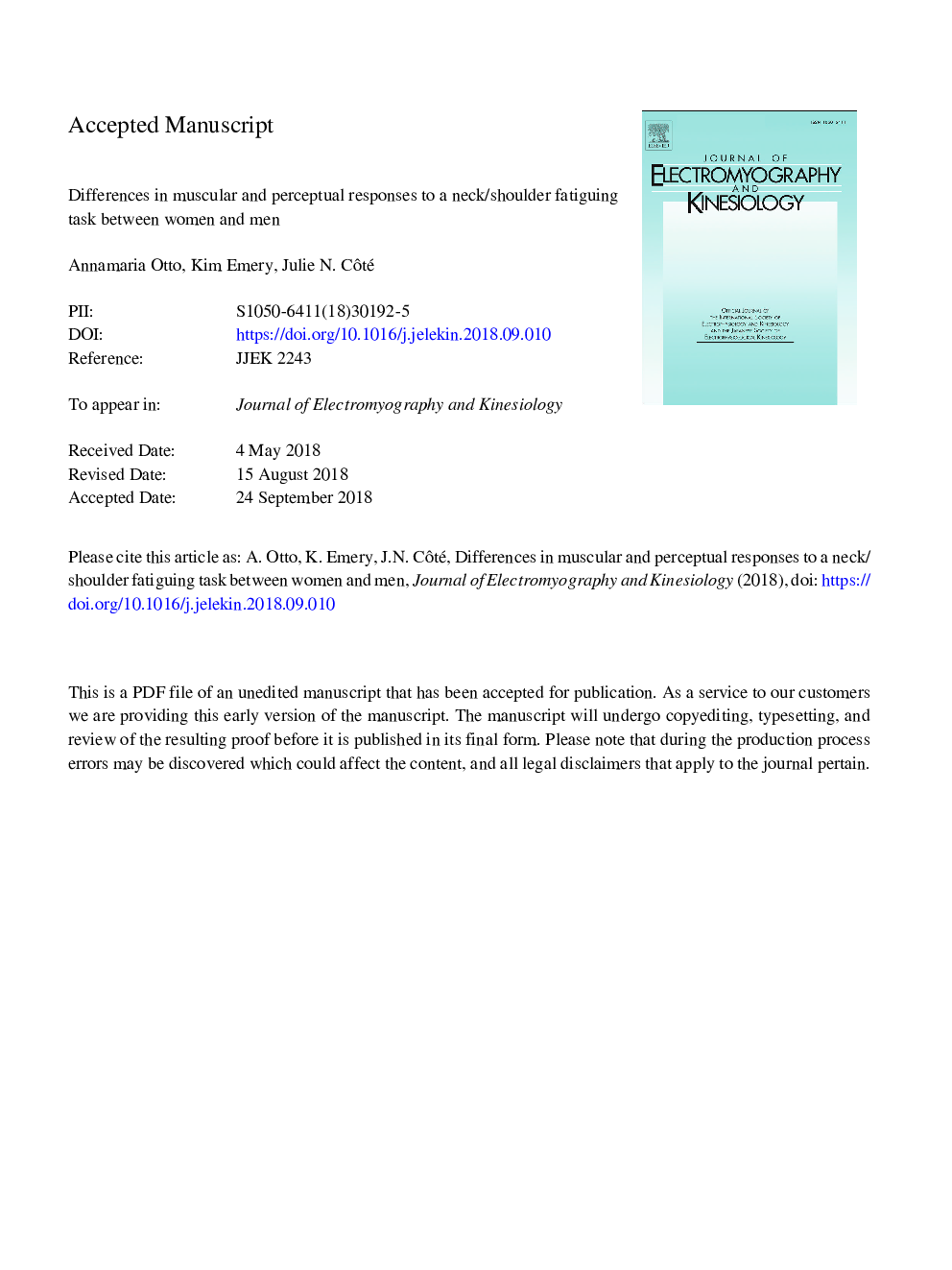| Article ID | Journal | Published Year | Pages | File Type |
|---|---|---|---|---|
| 11032686 | Journal of Electromyography and Kinesiology | 2018 | 38 Pages |
Abstract
Fatigue is a risk factor for the development of work-related musculoskeletal disorders (WMSDs) of the neck/shoulder, and exertion is a state that connects the sensory/affective and physical aspects of fatigue. Relationships between ratings of perceived exertion (RPE) and electromyogram (EMG) signal characteristics have been identified. However, the sex-specific effects on these relationships are unclear and could be affected by personal factors such as skinfold thickness. 28 healthy young adults completed a fatiguing task with the arm held at shoulder height. Neck/shoulder EMG and RPE were collected at the end of each minute. Males showed stronger correlations between RPE with anterior deltoid (AD, rsâ¯=â¯0.37) and upper trapezius (UT, rsâ¯=â¯0.48) EMG, whereas females showed a weak relationship between RPE and UT EMG (rsâ¯=â¯0.22), and no relationship with AD EMG. Significant correlations were observed between biceps EMG and skinfold thickness in both males and females. Findings suggest that neck/shoulder perceived exertion is strongly associated to the activity of shoulder mobilizers (anterior deltoid) in men, whereas in women, it is rather associated to the activity of shoulder stabilizers (upper trapezius), and to a lesser extent. It is possible that in turn, these sex differences affect fatigue adaptation strategies. Skinfold thickness may be an important variable to consider when studying sex-specific characteristics of muscle fatigue.
Related Topics
Health Sciences
Medicine and Dentistry
Orthopedics, Sports Medicine and Rehabilitation
Authors
Annamaria Otto, Kim Emery, Julie N. Côté,
